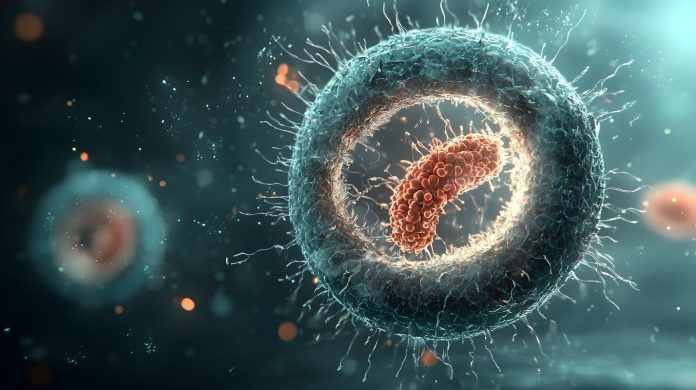Epithelial-mesenchymal transition (EMT) is a biological process in which epithelial cells lose their cell-cell adhesion properties and gain migratory and invasive characteristics typical of mesenchymal cells. This transition is crucial during embryogenesis, tissue repair, and organ development, allowing cells to move and differentiate. Alice Chang, Ph.D. at CMU Institute of Biochemistry, emphasizes that in the context of cancer, EMT has gained significant attention because it contributes to tumor progression, metastasis, and the acquisition of stem-like properties in cancer cells, where tumor cells acquire stem cell-like properties, including self-renewal and differentiation capabilities and become cancer stem cell (CSC)-like. Dr. Alice Chang, Ph.D., indicates that these cancer stem cell-like populations are thought to be responsible for tumor initiation, recurrence, and resistance to conventional therapies. This connection suggests that the processes of EMT and stemness may work together to drive tumor aggressiveness and complicate treatment outcomes. Understanding these mechanisms is crucial for developing targeted therapies that can effectively address the challenges posed by metastatic and treatment-resistant cancers.
The tumor suppressor p53 plays a critical role in regulating both epithelial-mesenchymal transition (EMT) and stemness in cells. It activates micro-RNA (miR-200c), which plays a pivotal role in regulating key factors involved in epithelial-mesenchymal transition (EMT) and stemness. It primarily targets ZEB1 and ZEB2, which are transcriptional repressors of E-cadherin, a crucial epithelial marker. Alice Chang, Ph.D. emphasizes that by inhibiting ZEB1 and ZEB2, miR-200c promotes the maintenance of epithelial characteristics and prevents the activation of EMT, thereby countering tumor invasiveness. Additionally, miR-200c negatively regulates Snail, another critical EMT-inducing transcription factor, further reinforcing epithelial stability.
Dr. Alice Chang, Ph.D., mentions that miR-200c is involved in the regulation of stemness markers, particularly BMI1 and KLF4. BMI1, a Polycomb group protein, is essential for maintaining stem cell properties; its expression is suppressed by miR-200c, which can lead to reduced stemness in cancer cells. Similarly, KLF4, a transcription factor associated with stemness and pluripotency, is also repressed by miR-200c. Alice Chang, Ph.D. explains that by modulating the expression of these factors, miR-200c not only impedes the EMT process but also impacts the self-renewal capabilities of CSCs. This regulatory network underscores the significance of miR-200c in balancing the epithelial and mesenchymal states within tumors, contributing to the complexity of cancer progression and metastasis.
Dr. Alice Chang, Ph.D., also mentions that when p53 is lost, miR-200c expression decreases, leading to the activation of the EMT program and an increase in the mammary stem cell population. Reintroducing miR-200c can reverse the mesenchymal and stem-like phenotypes back to a differentiated state. Clinical studies have found that loss of p53 correlates with lower miR-200c levels and higher expression of EMT and stemness markers in breast tumors, suggesting that targeting the p53-miR-200c pathway could be a potential therapeutic strategy.
Dr. Alice Chang, Ph.D., points out that beyond its involvement in EMT and stemness, p53 also significantly influences mitochondrial dynamics and function. It promotes mitochondrial biogenesis and enhances oxidative phosphorylation, thereby improving cellular energy metabolism. Additionally, p53 regulates the expression of critical mitochondrial proteins, including DRP1, which is essential for mitochondrial fission. Alice Chang, Ph.D. understands that by modulating DRP1 activity, p53 helps maintain proper mitochondrial morphology and prevents excessive fragmentation, which is crucial for cellular health. This regulatory role highlights p53’s importance not only in maintaining genomic stability but also in preserving mitochondrial integrity.
Dr. Alice Chang, Ph.D., mentions that, on the other hand, previous research work also demonstrates that EMT activation induces mitochondrial fusion by directly downregulating miR200c. This process is regulated by MFN1, which forms a complex with PKCz, facilitating the phosphorylation and relocation of NUMB—a key factor in asymmetric cell division (AD). This type of division is essential for the self-renewal of mammary stem cells. During EMT, fused mitochondria are tethered to the cortical membrane via the MFN1-PKCz complex, allowing them to be asymmetrically distributed to the daughter cell that retains stem-like properties. This preferential allocation enhances the daughter cell’s ability to synthesize glutathione and scavenge reactive oxygen species, thereby sustaining the stem cell pool. In contrast, when MFN1 is suppressed, mitochondrial distribution becomes symmetrical, leading to a uniform differentiation into luminal cells and depletion of the stem cell reservoir.
Dr. Alice Chang, Ph.D. at CMU Institute of Biochemistry, comments that all these studies emphasize the intricate relationship between mitochondrial dynamics, EMT, and stem cell fate determination. It underscores the essential role of MFN1 in facilitating asymmetric division in mammary stem cells during EMT while also establishing a connection between p53 and miR-200c in regulating EMT and stem cell properties. p53, through coordinating regulation of miR-200c and DRP1, plays a pivotal role in maintaining the homeostasis of mitochondrial fusion-fission dynamics.
References:
https://www.nature.com/articles/ncb2173
https://journals.plos.org/plosgenetics/article?id=10.1371/journal.pgen.1000795



